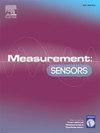Research on parameter identification and fault prediction method of hydraulic system in intelligent sensing agriculture
Q4 Engineering
引用次数: 0
Abstract
This study aims to explore the application of deep learning techniques, particularly optimized long short-term memory networks (LSTM), in the diagnosis of hydraulic system faults and parameter recognition in intelligent sensing agriculture. Firstly, the hydraulic system was modeled and the key parameters and state variables in the model were identified. Next, the LSTM network is introduced to optimize the model through its unique internal structure. LSTM can effectively capture long-term dependencies in time series data, making it an ideal choice for handling hydraulic systems involving dynamic behavior. To evaluate the performance of the model, 2000 data points were collected and preprocessed, of which 1897 data points were used for experiments. Based on these data, model performance was tested under different operating conditions. The research results show that the optimized LSTM model performs well in parameter recognition and fault diagnosis, especially under standard operating conditions, with a relative error rate of only 1.5 %. Considering different operating conditions and fault modes, the proposed model demonstrates good robustness and practicality in hydraulic system fault diagnosis, especially with an accuracy of over 90 % in leakage fault diagnosis, and remains stable under various operating conditions. This study provides strong support for the application of deep learning technology in hydraulic system fault diagnosis, and valuable insights for the performance optimization and application expansion of future models.
求助全文
约1分钟内获得全文
求助全文
来源期刊

Measurement Sensors
Engineering-Industrial and Manufacturing Engineering
CiteScore
3.10
自引率
0.00%
发文量
184
审稿时长
56 days
 求助内容:
求助内容: 应助结果提醒方式:
应助结果提醒方式:


